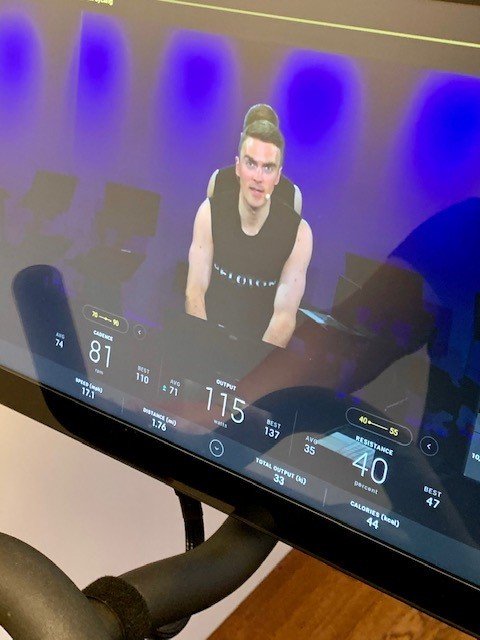When My Peloton Goals Became A Metaphor for Life
Recently I was explaining to someone my focus on increasing cadence during Peloton rides. As the words tripped out of my mouth, I suddenly realized the same was necessary in my career.
For those without the joy of a Peloton, here’s a little background. The key metrics on the bike are resistance, cadence and output, which is the combination of the two that shows the work you’ve done. Output establishes your rank on the leaderboard.
Let’s talk resistance. When you increase resistance, your body must work harder to move the pedals, overcoming opposition. It’s a measure of strength that you can muscle through whatever force seeks to thwart you. How often does that happen in your life? In your career? My guess is a lot. There’s always some situation, some person or reality we must survive, get beyond. What doesn’t kill you makes you stronger, right?
It feels good to survive one of these situations and it surely builds muscle, but it also perpetuates a vicious cycle. If you can just get through this next month, this next project, this next phase, then everything will be better. Except that it won’t. And even if it is, it’s a temporary reprieve because there’s a new next hill to climb and there always will be when you rely on overcoming resistance as the main driver of output.
That’s where cadence comes in. Getting cadence right is about establishing a rhythm. It is measured. Think dance or poetry or music, they all have a particular cadence. On the Peloton, the higher your cadence the faster you go. If your cadence is higher and you’re able to keep it steady, you’ll be less exhausted when you’re done. You starting to get the picture?
How often does work get out of balance? When the rhythm is chaotic, it gets harder to keep up. For many of us, especially during this pandemic, that has become a continuous reality. To compensate, we rely on resistance —just need to push harder through the next two weeks and then rest.
It’s not a coincidence getting these two metrics aligned increases your output without burning you out. As I’ve put my cycling focus on cadence this last month, I’ve noticed a few other things that correlated to real life such as how much energy you waste when you push down hard on the pedal; good cadence requires a fluid movement, where the upward pull is symmetrical with the downward stroke.
I don’t want to geek out on the bike here, because the lessons are so much bigger than exercise.
For starters, being able to muscle through situations is an important skill, but it’s a limiting one. While it will provide early success, it ultimately becomes a blocker. Becoming over reliant on strength and endurance will wreak havoc with the balance necessary to truly succeed. Sure, there are times we all dig deep to get through a crisis. And in that moment, you will find the strength required. But if you’re testing this metric every day, you are burning out even if the adrenaline prevents you from realizing it.
Ultimately, establishing a cadence that works for you is critical. We all have a different rhythm; some of us gravitate to pulsating cadences, others like it a little slower. Whatever is optimal for you is what’s optimal. Think about people with real life-and-death jobs, say a brain surgeon or firefighter. The key to their success is maintaining balance in the moment. Easier said than done if my most recent Peloton classes are any indication. Just like the strength you built with resistance, it takes time to build up speed and endurance. And it requires mental focus as much as physical to make the change. Get this right, and it won’t take as much time or energy to get where you’re going.
If you’re doing this and it’s still not working, then you need help. Talk to your manager or mentor about your goal and ways to create better balance. Think about what triggers the imbalance and how you, perhaps with their help, can work to address it. It may not be you; it could very well be a situation for which balance is not possible and that’s a different choice.
I’ve been spinning and working for more than 25 years, and I’m still learning about both and myself. Here’s to increased cadence and greater output in 2021.

